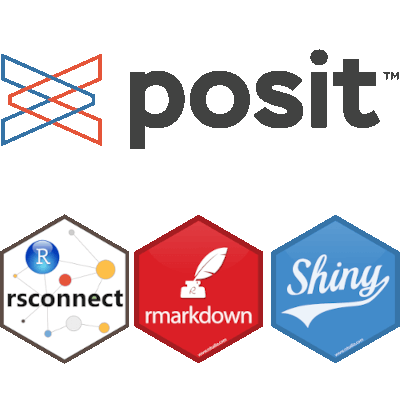To reap all the advantages of the riskassessment
application, an organization needs to generate and store results
frequently derived from the app, including but not limited to:

- Uploading new packages, & storing their metric info and
riskmetricscore - Publishing reviewer comments
- Submitting package decisions
- Storing organization-wide metric weights and score-based thresholds for decision automation
- Credential management for authorized users
- Etc
To accomplish this, the app uses configuration settings to create and populate several storage solutions locally, in the app’s root directory:
- A
SQLitedatabase namedcredentials.sqlite(by default) for credential management - A json file named
loggit.json(by default), recording rudimentary logs of actions performed in the app - A
SQLitedatabase nameddatabase.sqlite(by default) for storing all pkg info, metric info, and comments/ decisions
Note that this article won’t cover the credentials database since that’s that’s been covered (at length) in the “Credential Manager” guide. As you might expect, some deployment environments come with limitations that are not amicable to storage method defined above! Spoiler alert - shinyapps.io is one of them. This article will provide more details about these crucial storage objects and share a run down of the following deployment options with helpful tips:
shinyapps.io
RStudio Connect
Shiny Server
ShinyProxy
Note! In the future, we’ll consider adding utilities that would allow users to connect to an external, or remote storage method (like a database).
Installing vs Forking
Before we discuss deployment methods, we should note that the riskassessment application is developed using renv as a form of source control. This helps maintain stability in the code base. While you can install riskassessment from Github, it is strongly recommended to use a fork of the riskassessment repository for deployment. This will serve a handful or purposes for your organization:
- You can utilize renv in your deployment to help ensure you share the same environment as the app developers, ensuring consistent behavior.
- You will have easier access to the configuration file allowing for a more streamlined deployment if you have several projects.
The db-config.yml file
Starting with {riskassessment} v1.0.0, a configuration
file can be found at inst/db-config.yml which is used to
initialize the application for deployment. This configuration contains
elements vital to app initialization and will only grow as development
continues. Many of the elements in the file are also editable from
within the application itself (provided your user role has the
privileges to do so). Currently, db-config.yml contains the
following major elements:
-
assessment_db: A string designating the file path
of the assessment SQLite database (will be created upon initialization).
It has a default value of
database.sqlite. -
credential_db: A string designating the file path
of the credentials SQLite database (will be created upon
initialization). It has a default value of
credentials.sqlite. -
loggit_json: A string designating the file path of
the logging JSON file (will be created upon initialization). It has a
default value of
loggit.json. - credentials: A list defining user roles and privileges to assigned to those roles in the credentials database.
- decisions: A list defining decision categories, automated decision rules (optional), and custom decision category colors (also optional).
- metric_weights: A list containing the riskmetric weights to use upon initialization. These weights are used to increase and decrease the priority of any one metric.
Below is a look at the current default configuration if you were to fork the riskassessment code today:
default:
assessment_db: database.sqlite
loggit_json: loggit.json
credential_db: credentials.sqlite
credentials:
roles:
- admin
- lead
- reviewer
privileges:
admin: [admin, weight_adjust, auto_decision_adjust, final_decision, revert_decision, add_package, delete_package]
lead: [weight_adjust, auto_decision_adjust, final_decision, revert_decision, add_package, delete_package]
reviewer: add_package
decisions:
categories:
- Low Risk
- Medium Risk
- High Risk
metric_weights:
covr_coverage: 0Configuring the assessment database

When the riskassessment::run_app() function is ran, the
code base will check if an assessment sqlite file exists by the name you
give it (default is database.sqlite) and if it doesn’t, several
tables will be initiated to create this database just before the app
launches. Note that the user has the authority to name the database file
to whatever they like using the inst/db-config.yml file.
There, you can include a file path preceding the file name if you wish
to move the location of the database away from the root directory. For
example, the following code would create a database called
“database.sqlite” in the dev/ folder:
At the time this vignette was authored, the database will initialize
the following tables with all NULL values:
-
comments: stores user comments, including user names associated with each comment entry, comment type, and timestamp -
community_usage_metrics: stores CRAN package downloads per month -
metric: stores metric info, including theriskmetricname, label, short description, type, and weight -
package_metrics: stores all package-specificrismetricmetrics -
package: Contains all package information, like name, version, maintainer, etc. It also contains a theriskmetricscore, the weighted score, decision, and timestamp.
Note: if any changes/ updates occur in these tables with a new
release of riskassessment, you may need to delete the
database file before re-running the app. Any such changes should be
announced as ‘breaking changes’ in the app. If so, remember to save a
copy of your current database file in another directory for backup
purposes.
Database log file config
As mentioned previously, the loggit.json file is
initiated to track general actions performed in the application,
especially those that would reflect a change in the assessment db
(database.sqlite file). At the time this vignette was
authored, here’s a summary of actions logged:
- App start up
- User log-ins
- Enabling/ Disabling or changing automated decision rules
- Decisions initiated by users or the decision automation rules, including
- When pkgs are added or removed from the database, or when there are issues with this process, like when there is an absence of data to that support certain metrics
- Re-weighting pkg metrics
- Any database issues or conflicts that may arise
Each loggit “transaction” recorded contains a lot of info, but most notably, it will contain a time stamp, record type (“info”, “warn”, or “error”), and a message. For database transactions, the message will usually include the query that was executed. All log entries are always printed out in the R console for your convenience. For example:
riskassessment::run_app()
> [1] "Log file set to loggit.json"
> Listening on http://127.0.0.1:4097
> {"timestamp": "2023-03-20T11:46:23-0400", "log_lvl": "INFO", "log_msg": "User admin signed on as admin"}
> {"timestamp": "2023-03-20T11:46:33-0400", "log_lvl": "INFO", "log_msg": "The following decision rules were implemented by admin (admin): Medium = (0.33__COMMA__ 0.66]; Low = (0__COMMA__ 0.33]; High = (0.66__COMMA__ 1]."}Feel free to use this information as you see fit! Similar to the
assessment_db parameter in inst/db-config, you
can name the file whatever you like, and save it in an any directory
you’d like. Below, we save it in the dev/ folder and name
it “loggit.json”:
Credentials configuration
Similar to the assessment database, when the
riskassessment::run_app() function executes, the code base
will check if an credentials sqlite file exists by the name you give it
(default is credentials.sqlite) and if it doesn’t,
riskassessment will initiate this new database before the
app launches. Note that the user has the authority to name the database
sqlite file whatever they desire using inst/db-config.yml.
There, you can include a file path preceding the file name if you wish
to move the location of the database away from the root directory. For
example, the following code would create a database called
“credentials.sqlite” in the dev/ folder:
default:
assessment_db: ./dev/database.sqlite
loggit_json: ./dev/loggit.json
credential_db: ./dev/credentials.sqliteRight after the credentials_db element is used, the credentials element (with two sub-elements: roles and privileges) must be populated. As a guide, below is a snippet of the default values for these elements, but we encourage you to design the configuration that works for you (or your organization).
credentials:
roles:
- admin
- lead
- reviewer
privileges:
admin: [admin, weight_adjust, auto_decision_adjust, final_decision, revert_decision, add_package, delete_package]
lead: [weight_adjust, auto_decision_adjust, final_decision, revert_decision, add_package, delete_package]
reviewer: add_packageNote the “User Roles and Privileges” guide is entirely dedicated to this config. For full details, please visit & read that article!
Decisions configuration
The decisions element contains up to three sub-elements: categories (mandatory), rules, and colors. Here is an example configuration we’ll walk through together:
decisions:
categories:
- Insignificant Risk
- Minor Risk
- Needs Review
- Moderate Risk
- Major Risk
- Severe Risk
rules:
rule_1:
metric: bugs_status
condition: ~ metric_score(.x) <= .25
decision: Severe Risk
rule_2:
metric: dependencies
condition: ~ length(.x) >= 30
decision: Major Risk
rule_3:
metric: has_vignettes
condition: ~ .x == 0
decision: Moderate Risk
Severe Risk:
- .7
- 1
Insignificant Risk:
- 0
- .1
rule_else:
decision: Needs Review
colors:
Moderate Risk: !expr grDevices::rgb(52, 235, 229, maxColorValue = 255)Categories
Notice that you can set as many decision categories as
you wish, but you must specify at least two! It’s suggested that the
category names you define should be ordinal in some way, where the first
category is the lowest risk designation and the last category is the
highest risk. In the example configuration above, you can see the
categories are defined with a low risk category of “Insignificant Risk”
and a high risk category of “Severe Risk”. If you have a non-ordinal
category you’d like to use, like “Needs Review” for example, that’s
possible - just don’t list it first or last.
Rules
Using the rules element, you may set up with automated
decision rules prior to launching the app. That is, when a package is
uploaded, it will automatically get labelled with the appropriate
decision when a rules condition is met. These rules are
executed in order, from top-to-bottom, so it’s important to place rules
with greatest priority at the top of the list. To implement a decision
based on risk score, list the category name and then a mutually
exclusive range of values directly beneath it to label those packages
whose risk score falls between those two values. Above, we’ve defined
rules that dictate risk scores between 0.7 and 1 should automatically be
categorized as “Severe Risk”. Similarly, packages scoring between 0 and
0.1 should get labelled “Insignificant Risk”.
In addition, the configuration file can evaluate expressions to
define rules. To do so, the rule needs three elements:
metric, condition, and decision
as seen above. The metric element is simply the name of the
riskmetric assessment you’d like to evaluate. Next, provide
the R code (including riskmetric code) to help define your
rules using formula syntax. Note: .x will be translated to
to the selected metric’s assessment value. If you wish to
convert this to a metric score, use
riskmetric::metric_score(.x) as shown above. Last, provide
the decision category to apply when this condition is met. Above, we
specified hypothetical rules 1 - 3 that apply decisions in this manner;
Below, we spell out these expressions in sentence format, taking into
account that when the previous condition isn’t met:
- packages with a bug closure rate less than 25% should be considered “Severe Risk”
- packages with more than 30 dependencies (and >25% bug close rate) are “Major Risk”
- packages with no vignettes (and <30 dependencies and >25% bug close rate) are”Moderate Risk”
Categories not addressed under the rules banner will not
receive automated decisions. However, you can provide an optional
rule_else element to define a decision category to apply to
any packages that don’t meet the rules above it. Also, keep in mind that
users with privileges to edit decision rules may change any of these
configuration in the app at a later time.
Colors
Last, using the colors element you can detail specific
colors be assigned to certain categories. Notice that this element will
accept an expression to evaluate when launching the application. If you
don’t care what color is used for a category, then a color-blind
friendly color palette is used to fill in those categories not
specified.
Metric weights configuration
The metric_weights element contains the named list
of weights. If a weight is not supplied, it will default to 1. The
current list of weights that can be included are the following:
has_vignettes, has_news, news_current, has_bug_reports_url, has_website,
has_maintainer, has_source_control, export_help, bugs_status, license,
covr_coverage, downloads_1yr. As seen above, the default configuration
sets the weight for covr_coverage to 0. If you want to
ignore a certain metric because it has little value to our organization,
you could give it a value of zero.
When metrics are not explicitly given here, the app uses the default weight of 1 for each, unless of course there already exists a assessment database previously initialized where those metric weights were manually changed. If you wanted to toggle all current metrics, there is no harm in stating each metric and weight, so you could set up the config file to look like this, for example:
metric_weights:
has_vignettes: 2
has_news: 0.5
news_current: 2
has_bug_reports_url: 1
has_website: 1
has_maintainer: 1
has_source_control: 1
export_help: 2
bugs_status: 5
license: 1
downloads_1yr.: 3
covr_coverage: 0riskmetric will use these weights to score your package according to our org’s needs!
Deployment options

shinyapps.io
Beware: shinyapps.io does not offer persistent
storage of riskassessment’s SQLite database or
logs. Thus, it is not likely a viable deployment option
for your organization or group. For example, our demo
application (hosted on shinyapps.io) contains a pre-prepared
database of packages that can’t be permanently altered. It CAN be
altered within a session, but any changes will not
persist outside the session.
Posit Connect & Shiny Server

On a server, if you want to save files on disk, you’ll need to set write permissions accordingly on the folder you want to save the database, logs, and auto-decision json file.
On Posit Connect, you need to use an absolute path to specify the directory where to save the files. You can find more information here: Persistent Storage on Posit Connect.
Beyond that, it’s important to note that we strongly encourage those
deploying the app to take advantage of the renv.lock file
used to maintain package version dependencies. For more information on
how to use renv.lock and our general dev philosophy as it
pertains to package management, please read the “Using
renv” article. Highly related, we encourage the use of
git-backed deployment when possible. So, immediately after you
update/sync your package dependencies using renv, you may
want to run rsconnect::writeManifest() before deploying
from a dedicated branch. For convenience, we maintain a current
manifest.json that should follow the renv.lock
file in our GitHub repo. So, if you’ve forked the application, you
should be able to deploy the latest version of the app as-is, directly
from our master branch. For more information on git-backed
deployment & manifest files, please read the Posit article on git-backed
content.
ShinyProxy

With ShinyProxy, you can use
a Docker volume to write files outside of the application container. In
application.yml, you use can something like this in the
specs describing the application:
container-volumes: [ “/var/log/shinylogs:/root/logs” ]
/var/log/shinylogs is a directory on the server where
you deploy your applications with ShinyProxy. /root/logs is
a directory inside your Docker image.